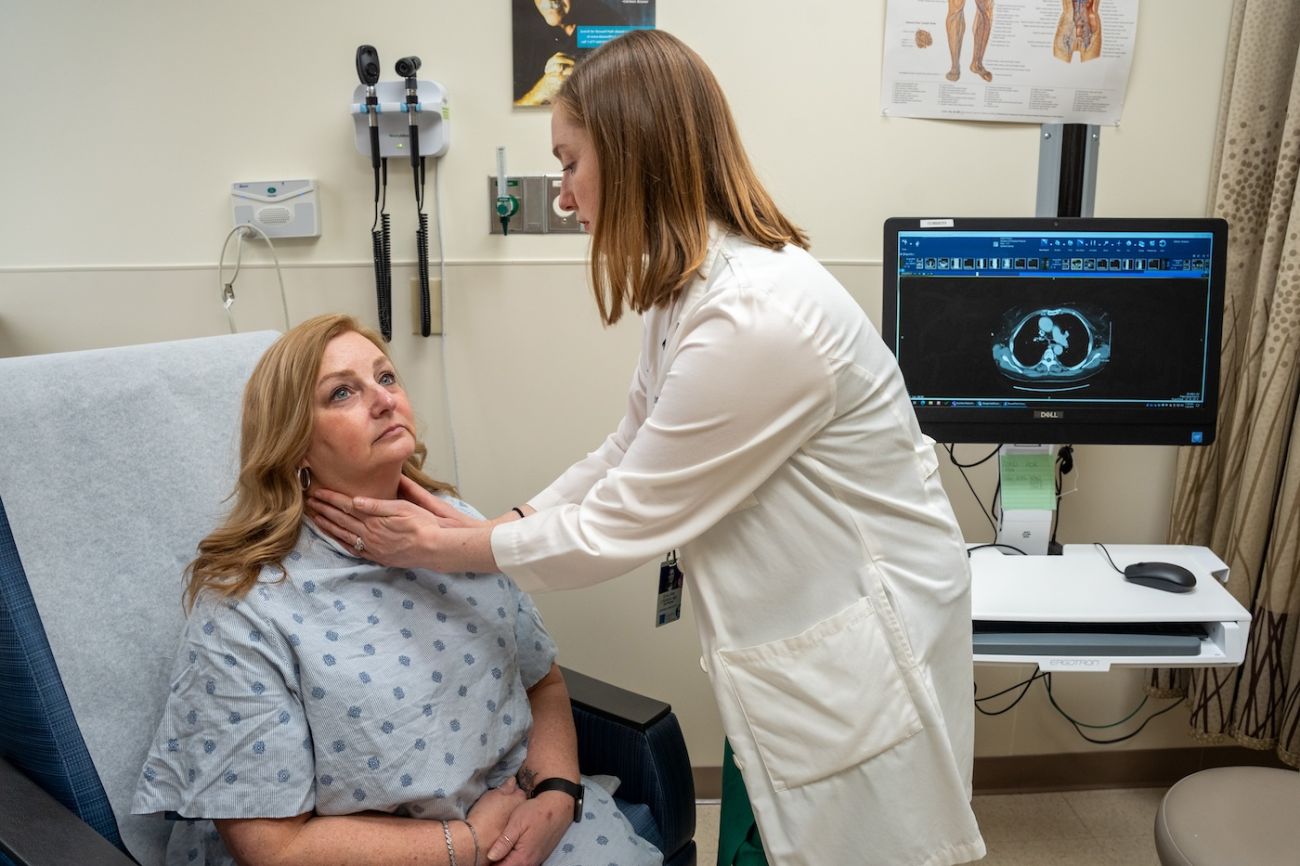Melanoma is the third most common form of skin cancer. While it is often described as the most deadly type, in 90-95% of cases, it is found early, treated quickly and cured.
But melanomas can go undetected, sometimes traveling inward, first to the lymph nodes and then, in some cases, into the brain, lungs, bones or intestines.
How is melanoma diagnosed?
The vast majority of melanomas are diagnosed early and are completely cured surgically soon thereafter.
Melanomas usually appear as changing moles or dark spots on the skin, with irregular borders, asymmetrical shapes and uneven coloring. Those that develop on areas of the skin that aren’t usually seen or examined — for example, on the back, the top of the head or the legs — are more likely to go undetected longer.
When a possible melanoma is detected, a skin biopsy is taken. The pathologist looks at the tissue under a microscope and determines whether a melanoma is present. If so, a micrometer is used to measure the thickness. The thicker a melanoma, the worse the prognosis and the higher the chance that it has spread.
Who’s at greatest risk for melanoma?
The dermatology and skin cancer team at Roswell Park Comprehensive Cancer Center stresses the importance of annual skin checks for moles or other areas of discoloration to find possible melanomas early, so they can be treated right away. People with fair skin, blue or green eyes, freckles or a history of blistering sunburns are at highest risk for developing melanoma. African Americans are at higher risk of acral lentiginous melanoma, one that usually develops on the soles of the feet, the palms and even under fingernails. Acral lentiginous melanoma caused the death of singer Bob Marley at the age of 36; he noticed a discoloration but didn’t get it treated.
Where does melanoma spread?
If a melanoma does travel, it’s most likely to spread to adjacent skin or the lymph nodes first. It’s possible a person will see smaller dark spots “traveling” from the original melanoma as it moves inward. These “in transit” metastases can move along the lymphatic system, coming up to the surface of the skin to leave a metastasis.
The place where oncologists typically look first to see if melanoma has spread is the lymph node that drains the skin where the melanoma developed. A person with melanoma that has spread to the lymph nodes might notice a lump under the skin near those nodes, whether in the neck, armpit or groin.
Why Roswell Park for melanoma?
Our breakthrough treatments for melanoma and the team of specialized experts behind them are what make Roswell Park unique your fight against melanoma.
If melanoma has spread internally and has reached an organ, the first symptom that something’s wrong might come from impairment of that organ, such as trouble breathing, a cough that won’t go away, headaches or a broken bone. The intestine is not one of the most common locations for metastases for other types of cancer, but it is one of the organs where melanoma metastasizes.



